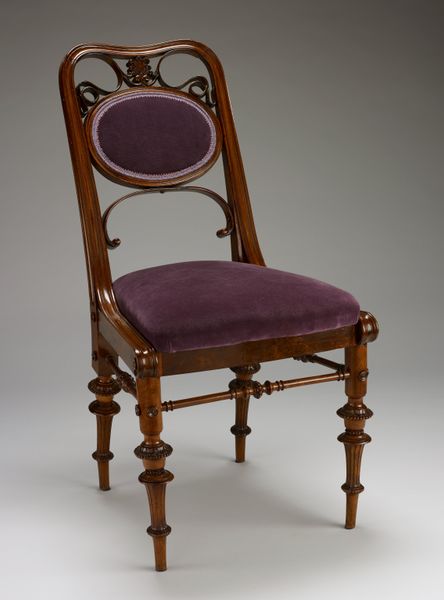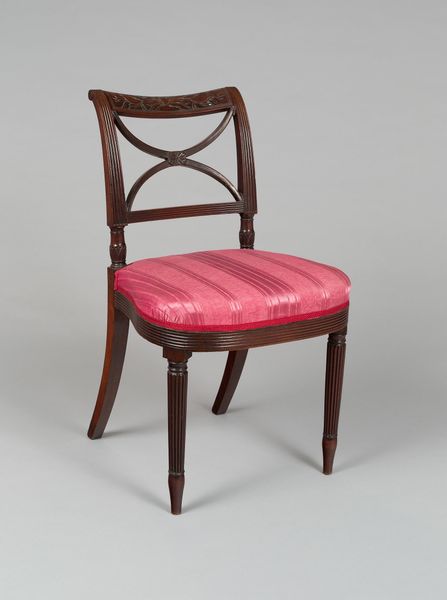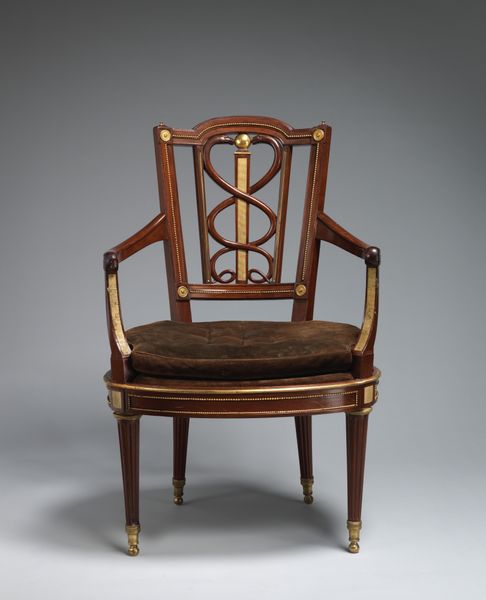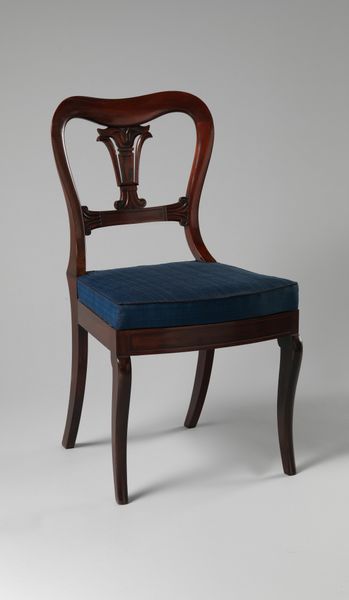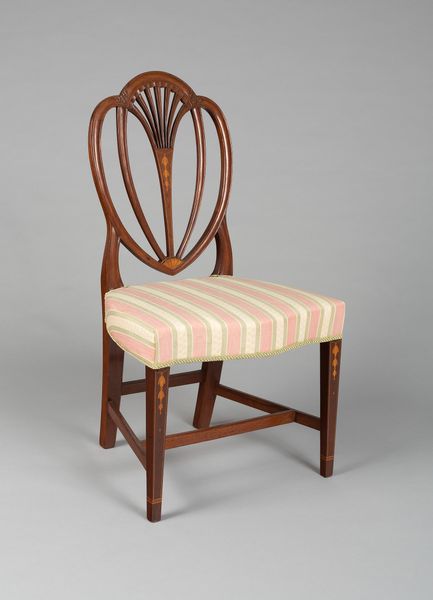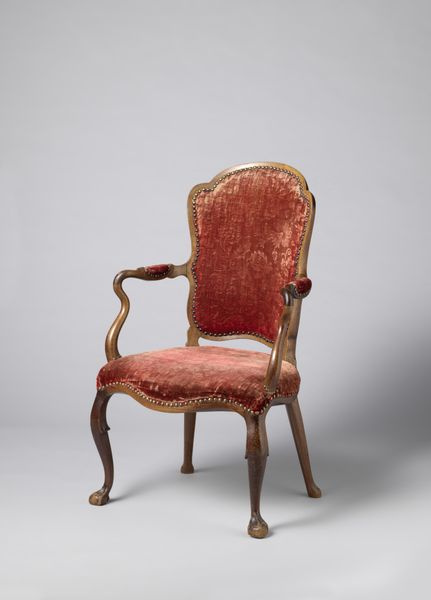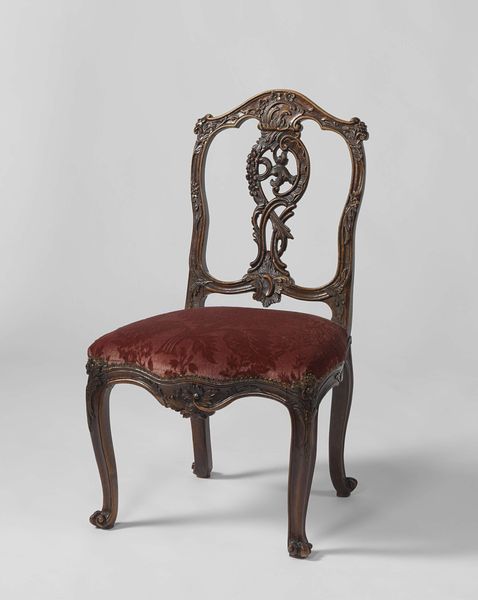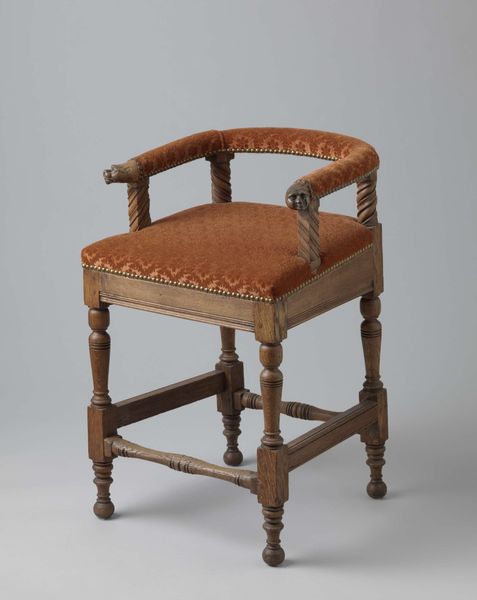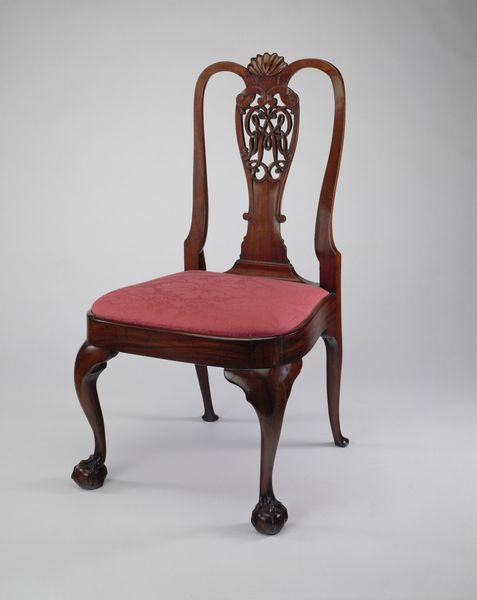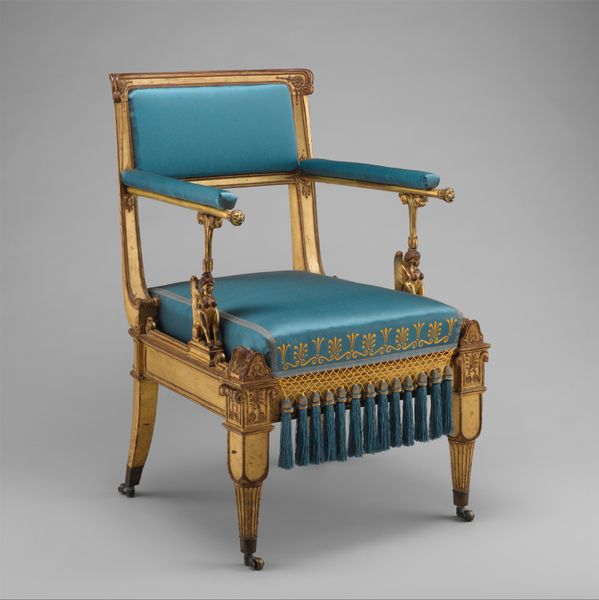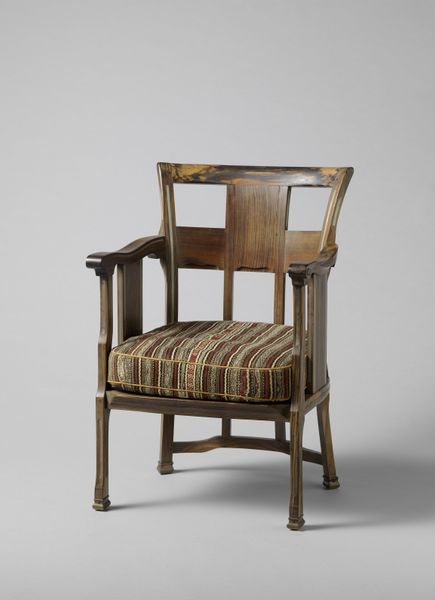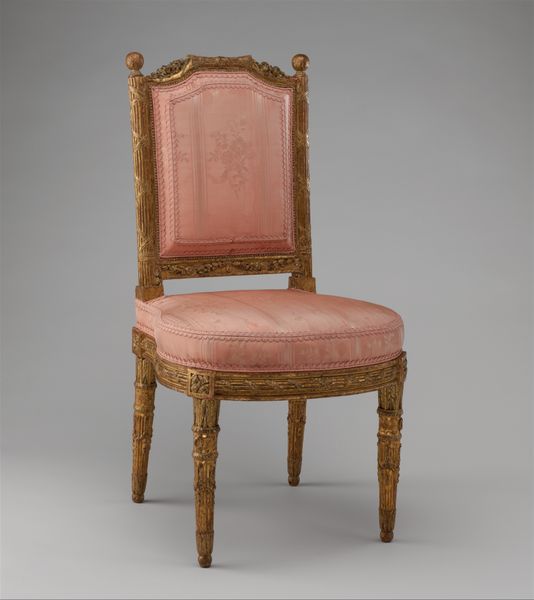
sculpture, wood
#
neoclacissism
#
form
#
sculpture
#
wood
#
decorative-art
Dimensions: 33 x 19 x 21 1/2 in. (83.8 x 48.3 x 54.6 cm)
Copyright: Public Domain
Editor: Here we have Duncan Phyfe's "Scroll back side chair," crafted around 1810-1815. It’s currently at the Met. It's wood and rather austere, even with the striped seat. What's your take? What visual echoes do you perceive within its form and decorative details? Curator: Instantly, the neoclassical influence is undeniable. We see in it a reaching back to the symbolic language of ancient Greece and Rome, which spoke to ideas of order, reason, and a golden age. Those little details, like the carved honeysuckle, or anthemion, speak volumes about aspiration. Editor: Aspiration? In a chair? Curator: Absolutely! These motifs were pervasive in elite decor, embodying a cultural yearning. The chair becomes more than functional. Phyfe wasn’t merely making furniture; he was conjuring a world steeped in ideals. Think of how these visual cues were used to reinforce a certain social standing and shared values among the American upper class. The question I have for you, then, is this chair intended to evoke those same shared values? Editor: It's like the owners are participating in this performance, aligning themselves with those historic virtues! I didn’t notice all the subtle connections before. I am particularly intruiged by those orbs at the legs. Curator: These gilt bronze *sabots* ground the otherwise somewhat airy composition and serve as counterpoint to the finery in the back. The repeated vertical elements bring to mind a column or colonade. In every way it is striving for more than utility. Editor: So much for “just a chair”! Now, when I look at it, it appears so much larger and ambitious! Thank you for clarifying.
Comments
No comments
Be the first to comment and join the conversation on the ultimate creative platform.
